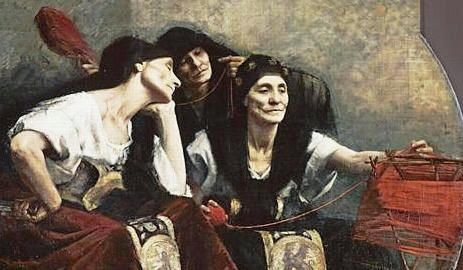Fate is a theme and motif that features throughout a range of literature. Within mythology, there are endless examples of fate and a principle controlling power that has power and control over heroes and villains alike. One example of mythological figures linked to fate are the Three Fates in Greek mythology.
The Three Fates, also known as the Moirae, are part of Ancient Greek Mythology. They were thought to control the destinies of mortals and the duration of life. They were thought to control all parts of life, all the successes and failures within a persons life. The Three Fate sisters are Clotho, Lachesis and Atropos. Clotho was the ‘Spinner’ and she would spin the thread of life; she is linked the symbol of a spindle. Lachesis was the ‘Allotter’ and measures the thread of life, with control of life span. And finally Atropos was the ‘Inevitable’ and cuts the thread, deciding the manner and time of death.

The Three Fates are often linked to tragedy as within traditional Greek plays there was an underlying message that one could not escape a foretold fate. Some example also would warn that one should not anger the gods or view themselves as equal to the gods as humans are bound by fate. An example of Greek play involving fate is Oedipus Rex, where as everyone tries to escape the predicated fate, including Oedipus, end up causing events to occur as warned, leading to suicide and bloody events. Further the idea of the three fates could compared to the 3 witches of Macbeth, as fate is a major theme in the play.